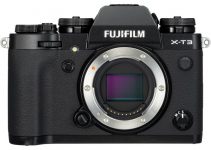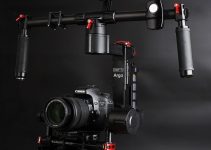Less than a month ago, Sony released the latest mirrorless camera in their higher-end Alpha series lineup – the A7III. What once was known as the less-capable sibling to the rest of the A7 counterparts has now floored the entire indie filmmaking industry by providing features that stand up comparably to the more expensive units in the line, including the A7RIII and A7SII.
While the A7SII has been hailed as the king of low-light mirrorless cameras since its introduction, it seems that finally there is a new contender on the front line that might perform equally well, if not better. Filmmaker Max Yuryev got some interesting insights on the topic by comparing the A7SII to the A7III while looking at each camera’s performance and usability in a series of tests covered in the comprehensive video below.
Specs-wise, the A7III absolutely dwarfs the A7SII thanks to its updated design and expanded feature sets. For around $2,000 – which is $500 lower than the A7SII currently sells for – you get a brighter and more responsive LCD touch screen, a newer generation construction with bigger handle grips, custom buttons with better placement around the camera, a joystick for alternative menu navigation options, dual SD-card slots, around three hours of battery life, a headphone jack, a USB Type-C port, and a dedicated Slow & Quick Motion button for easy toggling between high frame rate shooting modes.
In addition, Sony has made the LCD of the A7III smarter by disabling the automatic with to the Electronic View Finder (EVF) when you tilt the screen. Besides the updated internals, the A7III’s image quality has definitely received some significant upgrades that outperform the A7SII.
While the A7SII’s 12MP Full-Frame sensor gives the camera the ability to shoot in 4K, the A7III has a higher megapixel count at 24MP with a 6K sensor downsample to 4K. With this downsampling feature, the A7III can take a larger image and reduce the size to 4K while preserving even more image detail than in the A7SII.
The advantages of downsampling in the A7III are apparent when looking at the test shots of a brick building. In all shooting modes – whether in being 4K 24 fps, 4K 30 fps, and 1080p – you will notice a bit more image detail and sharpness in the A7III.
Even when comparing the slow-motion footage recorded at 120fps, the A7III’s image is superior to the A7SII with less of an image crop and sharper detail. The A7SII’s video, on the other hand, did appear softer compared to the newer camera. Although the A7III can produce slightly sharper images, the A7SII shouldn’t be discounted completely as its video quality is still better than most DSLRs and mirrorless cameras currently available on the market out there.
In the autofocus tests, the A7III managed to outperform the A7SII while being able to smoothly lock onto and follow a moving object with ease. According to Max, this is mainly due to the A7III’s phase and contrast detection features for autofocusing. Meanwhile, the A7SII is only equipped with contrast detection autofocus, resulting in some pulsing and lag time in the autofocus test.
The final setup shown in the video really pushed the cameras in one specific regard – low-light performance. For years, Sony’s A7SII has been touted as arguably the best low-light camera. While evaluating the low-light tests in the video, though, both the standard low-light test (dim light sources) and the extreme test (single candle light source), an interesting pattern emerged.
At ISOs below 12,800, the A7III appeared to have a cleaner and more detailed image than the A7SII. This can be noticed in darker areas of a shot such ashy monitor of the iMac G5 in the background. When stepping up to an ISO of 12,800 or above, however, things get a bit different.
The A7III appears to have less noise, but there is an apparent loss of detail due to Sony’s new denoting algorithms. On the A7SII, the noise artifacts are more present, but unlike the A7 III, there is more detail in the shot, especially when you look closer at Max’s face.
Jumping up to an extreme ISO of 51,200, the tides finally turn with the A7SII’s image coming out on top. While each camera has already faltered to the whims of color shifting, the A7SII’s footage appears slightly cleaner and more detailed.
With upgraded usability features and updated optics and sensor technologies, the A7III has really shown its strengths, while the A7SII’s inferior image quality has begun to show its age. So, we can only hope that Sony provides an update to the A7S line soon. With all the incredible features that the A7SII packs on board, who knows what stunning capabilities the A7SIII may get.
[source: Max Yuryev]
Order Links:
Sony Alpha a7S II Mirrorless Digital Camera (Body Only) (B&H, Amazon)
Sony Alpha a7 III Mirrorless Digital Camera (Body Only) (B&H, Amazon)
Disclaimer: As an Amazon Associate partner and participant in B&H and Adorama Affiliate programmes, we earn a small comission from each purchase made through the affiliate links listed above at no additional cost to you.



